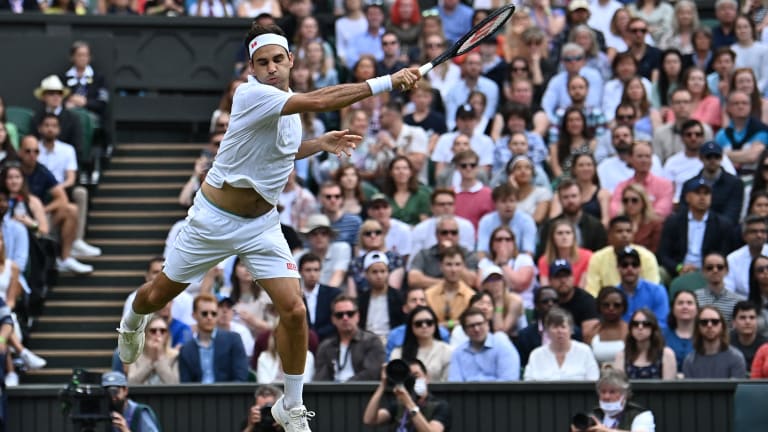There are few players that conjure the envy and respect of the tennis populace quite like Roger Federer. Records and reputation aside, from a sheer stroke production and aesthetic standpoint, he may not have an equal. Many yearn to whip an inside-out forehand or cut a wicked slice backhand in vintage Federer fashion. A dream for most? Perhaps. But there may be a way for the everyday player to make it their own reality. All you have to do is close your eyes… literally.
While capturing the same standard is probably not achievable, there is something the average player can do to match Federer’s technique. Dr. Paul Hamori, a lifelong tennis player and fan, has seen Federer play in-person more than 40 times. He has taken hundreds of high-speed photographs and studied countless more of the 20-time major champ in action and has come to the conclusion that Federer’s court prowess stems from perhaps his most underrated superpower: ball watching.
One of the earliest directives any aspiring player is given is to watch the ball. The more intently the ball is tracked, the cleaner the hit. However, contact between the ball and racquet lasts a few milliseconds. Which is so fast that it has already taken place before the brain has time to process it. In other words, the traditional theory is that it’s impossible to see contact in real time.
However, in Hamori’s book—The Art and Science of Ball Watching—he offers an alternative hypothesis. Given the speeds involved it may indeed only be feasible to perceive contact, but with proper methods and training a player can actually learn to get as close to “seeing” it as possible. Developing this skill will lead to better and more consistent shot outcomes. To establish and validate the book’s points, Hamori taps into his medical background to discuss such topics as light and sound, brain mapping and neurobiology of vision. But it’s essentially a four-step process, with Federer being the benchmark.

